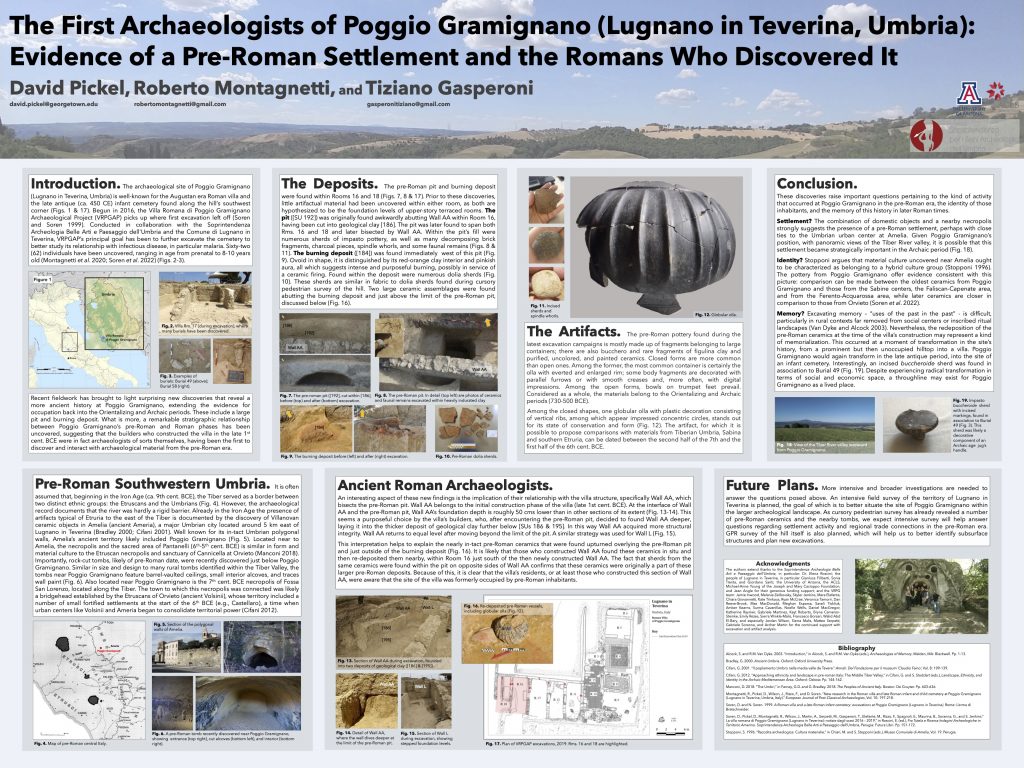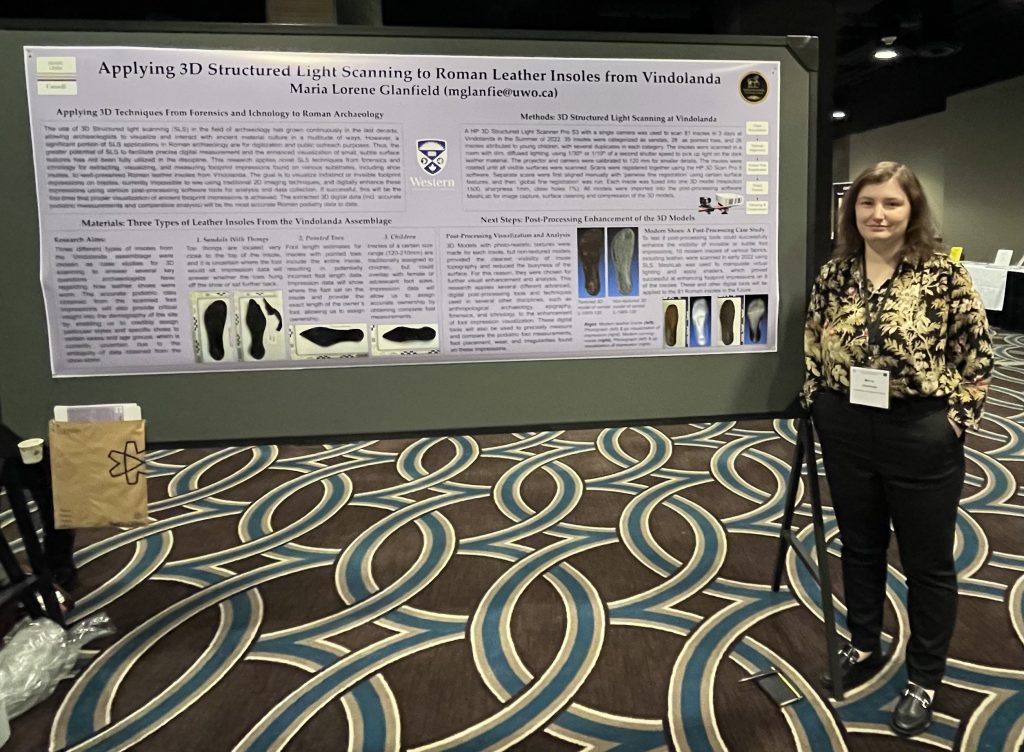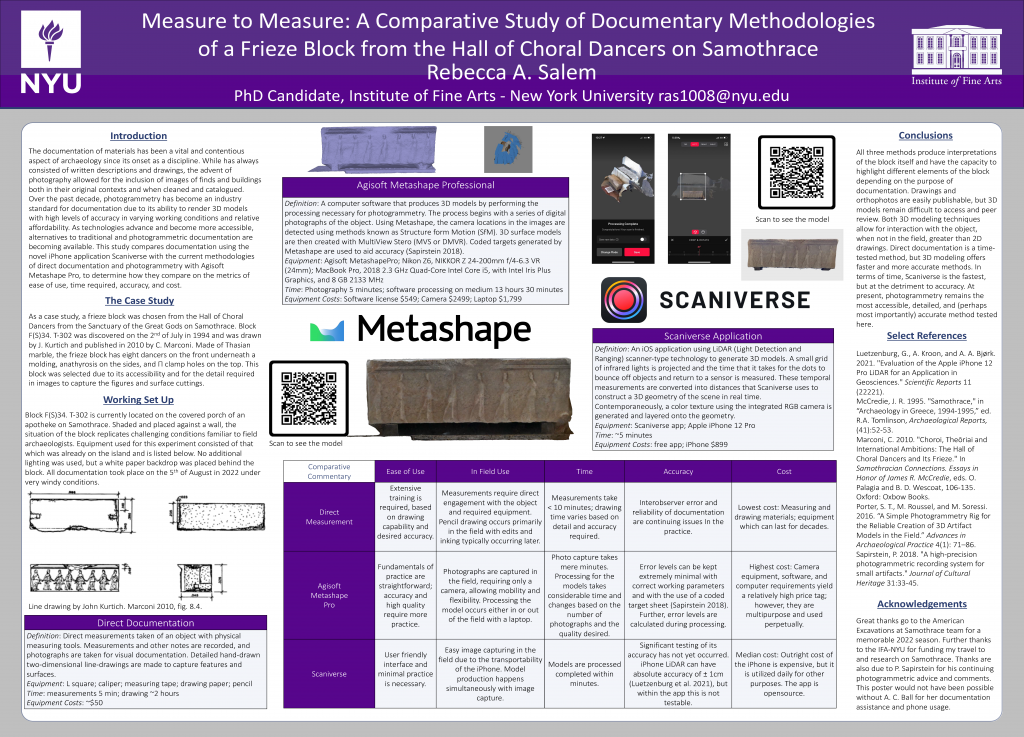January 30, 2023
At the 2023 Annual Meeting (New Orleans, LA/hybrid), we saw many posters featuring work from around the world. Three posters were selected as winners for this year’s AIA Poster Award Winners:
We asked the winners a few questions about themselves and their projects. We’ve included their responses below.
The Winners’ Responses:
David Pickel et al. (Best Poster)

· How long have you been a member of the AIA?
I have been a member since 2015, when I attended my first meeting in New Orleans, LA.
· How many Annual Meetings have you attended (in-person or virtually)?
I’ve attended 6 in person
· How did you first come to this project/topic?
My co-authors and I have working at Poggio Gramignano, studying its villa and infant cemetery, since the start of renewed excavations in 2016. However, these pre-Roman finds were first uncovered in 2018-2019, when we began to excavate what we then presumed to be the far limits of the cemetery area.
· What is one cool fact or interesting result from this project that didn’t make it onto the final poster?
The pre-Roman deposits are helping us to better understand the villa’s development and phasing, specifically the construction of its walls and the lay of the original hillslope prior to the villa’s construction. We know now that the builders encountered a variety of geological clay layers during the villa’s construction in the late 1st century BCE, each with varying degrees of compaction and some separated by thin and highly friable chalk veins. Lacking solid bedrock, the villa’s builders had no choice but to lay wall foundations within these unstable geological layers, resulting in a major collapse event around the end of the 1st century CE. Had we not discovered these pre-Roman deposits, we would not have excavated so far beyond the walls’ foundations, thus potentially missing the multiple deposits of geological clay and the intervening chalk veins.
· What is your advice to students/new authors who are preparing posters for upcoming conferences?
Use photos, maps, and figures to your advantage. In addition to catching eyes and drawing people in, images can help readers understand and navigate your poster. Images can simplify complex information and guide readers from one part of your poster’s story to the next.
Maria Lorene Glanfield (First Runner Up):

· How long have you been a member of the AIA?
I’ve been a member of the AIA since the spring of 2019, during my undergraduate degree.
· How many Annual Meetings have you attended (in-person or virtually)?
This was the first Annual Meeting that I’ve attended either in person or virtually.
· How did you first come to this project/topic?
My research on 3D imaging methods (including structured light scanning) and their application for Roman leather shoes started when I first joined Dr. Elizabeth Greene’s Vindolanda Archaeological Leather Project (VALP) at The University of Western Ontario in the first year of my Masters degree (2021). The project was interested in finding an advanced imaging technique that could successfully visualize footprint impressions on the insoles of the shoes, so my initial duties were to research all possible avenues and choose a suitable method, and that’s how I came to develop my current research.
· What is one cool fact or interesting result from this project that didn’t make it onto the final poster?
I am still in the early stages of post-processing enhancement of the 3D scans we captured of the Roman leather insoles at Vindolanda so I did not include any preliminary results on my poster, but so far, I have found that footprint impressions are now visible on several 3D models of the insoles of Roman shoes! Also, on one of the 3D scans we took of a Roman sandal, we found an inscription on the insole that you can’t see with the naked eye.
· What is your advice to students/new authors who are preparing posters for upcoming conferences?
Use as much of the space given to you on the poster boards as possible and use the best visuals you have for the subject. Try to make the poster interesting for readers who only have 30 seconds to skim it and those who have 10 minutes to carefully read it.
Rebecca A. Salem (Student Poster)

· How long have you been a member of the AIA?
I have been a member of the AIA since 2013
· How many Annual Meetings have you attended (in-person or virtually)?
I attended my first Annual Meeting in San Francisco in 2016 and virtually in 2021 and 2022. This was my first time presenting at the AIAs.
· How did you first come to this project/topic?
I came to this topic while working at the American Excavations Samothrace during our 2022 field season. One of our team members, Sam Holtzman, was using his iPad to make 3D models of architectural features for use in explaining features and in discussions about what to focus on next. I was very intrigued by how quickly the models were produced and wondered if this was a viable option to replace using photogrammetry. So, I decided to compare recording methods for this poster.
· What is your advice to students/new authors who are preparing posters for upcoming conferences?
To keep things as clear and as straightforward as possible. I thought my conclusions seemed rather simple, but they were ultimately the ones that answered the research questions that I had. It didn’t need to be made more complicated.
Congratulations to the poster award winners!
Notifications